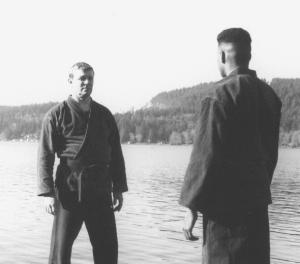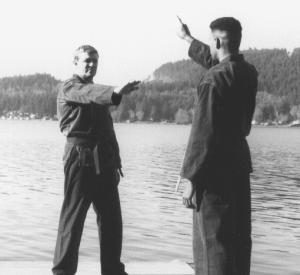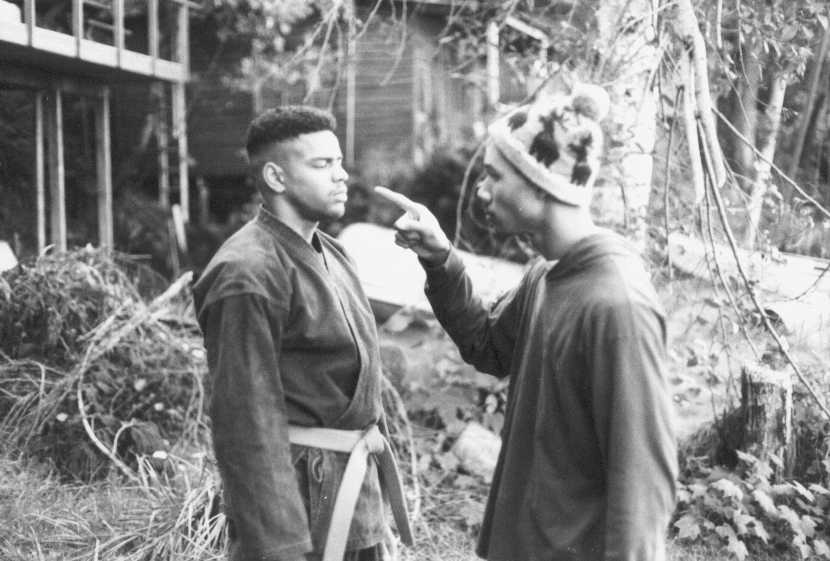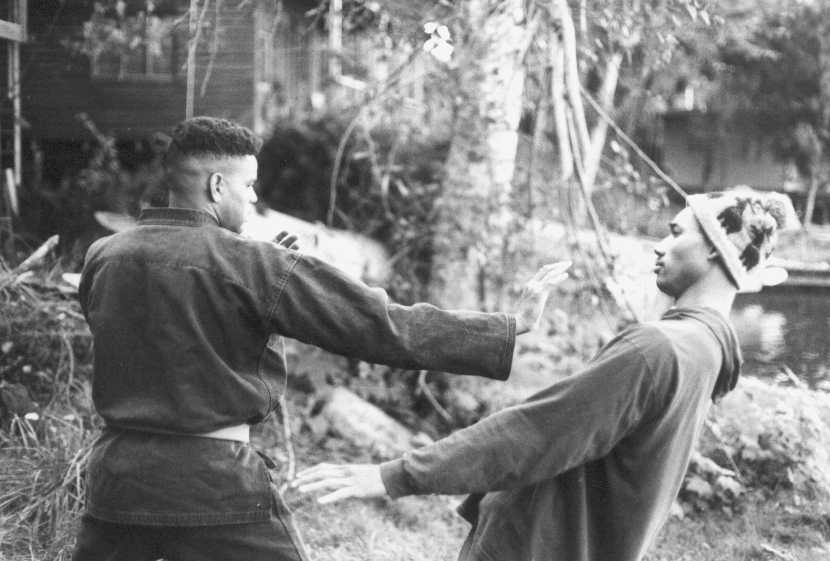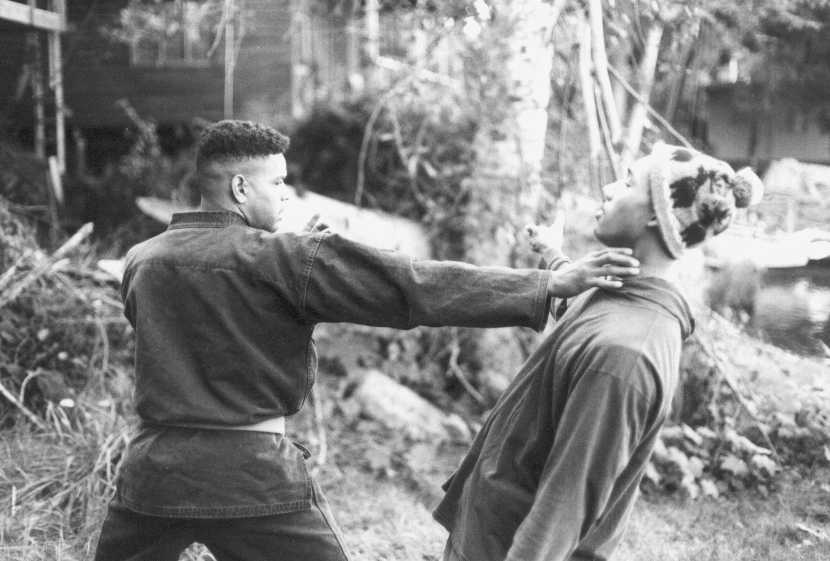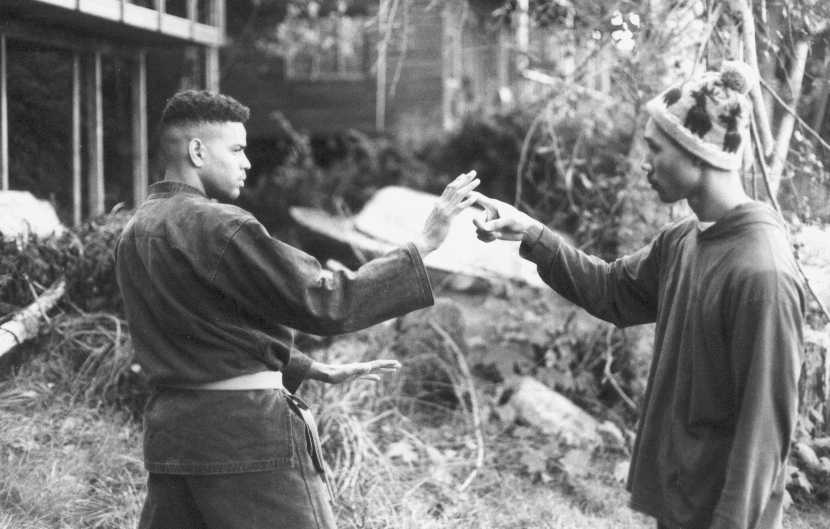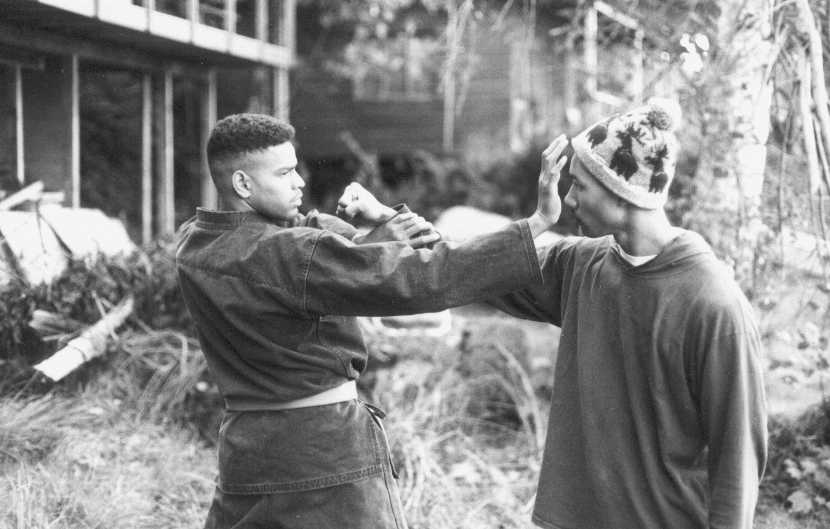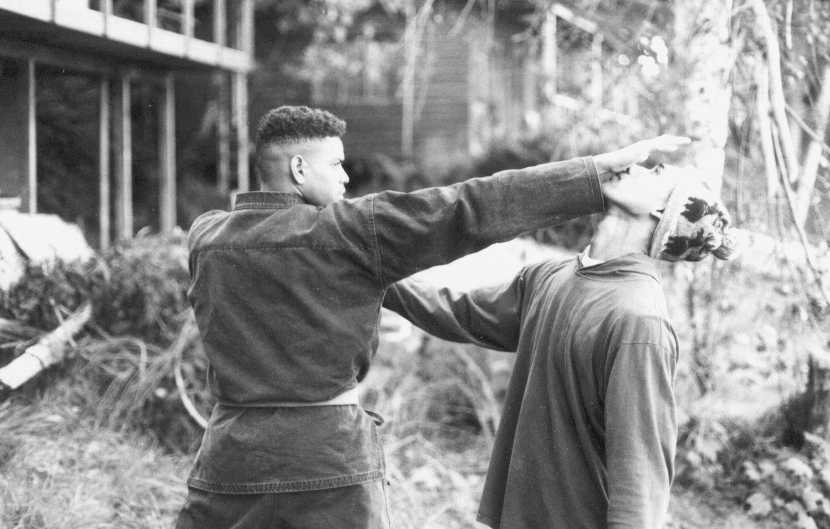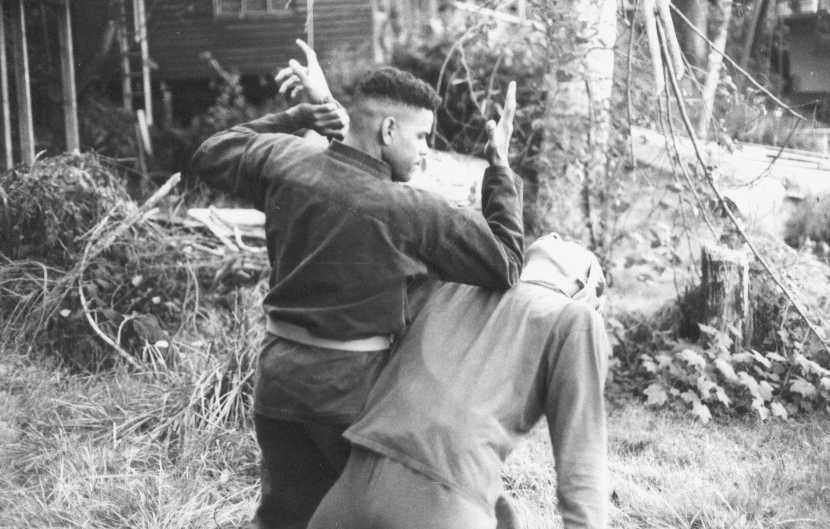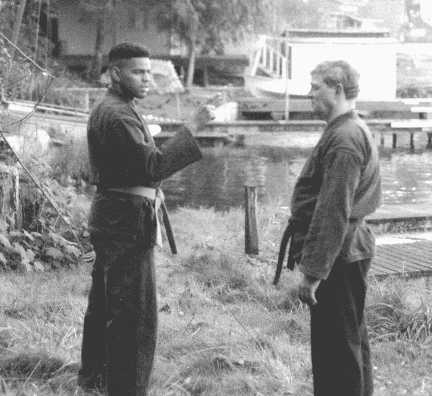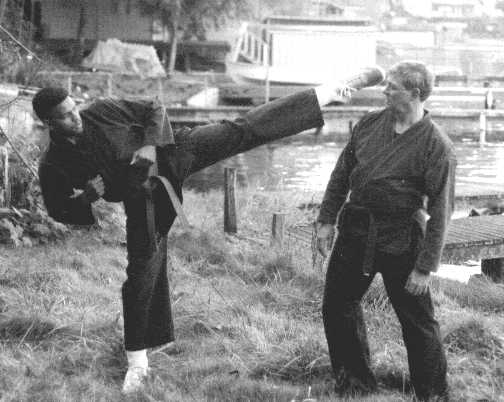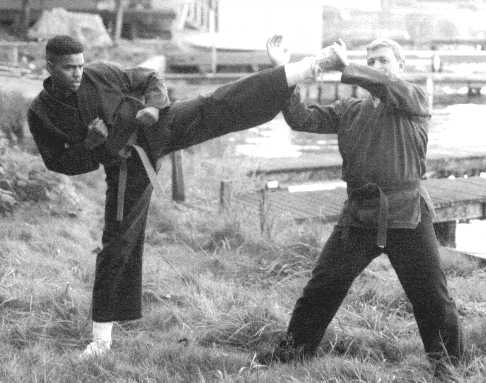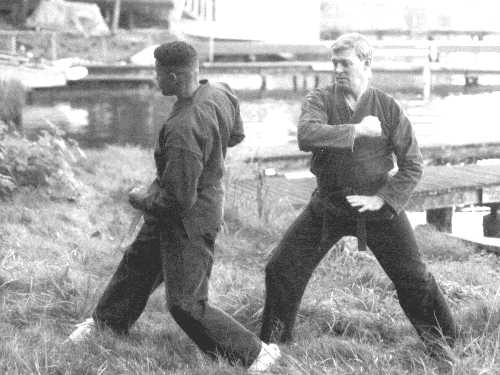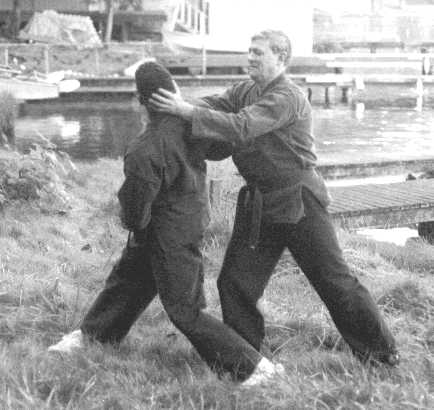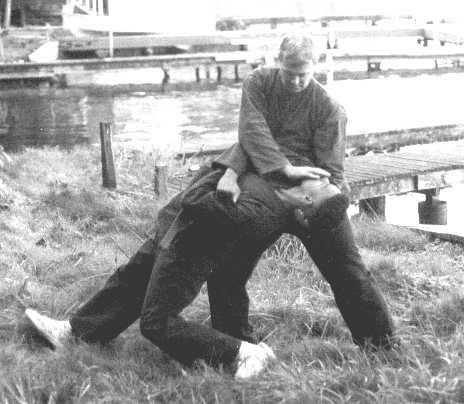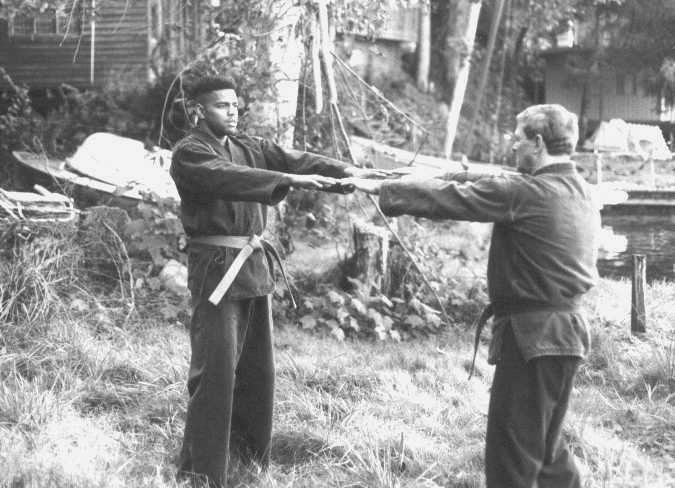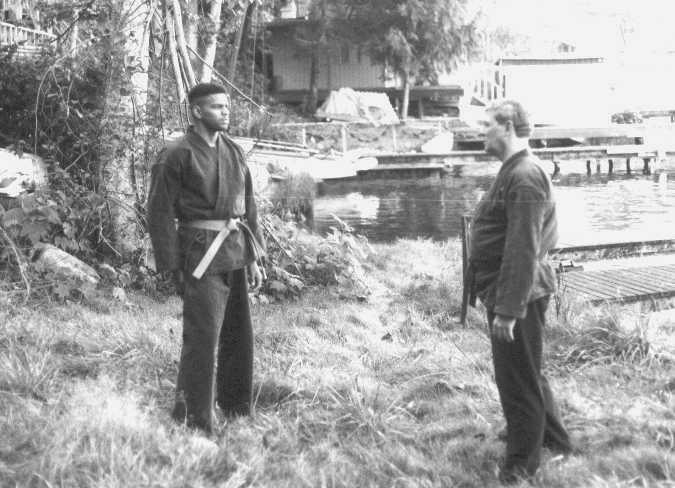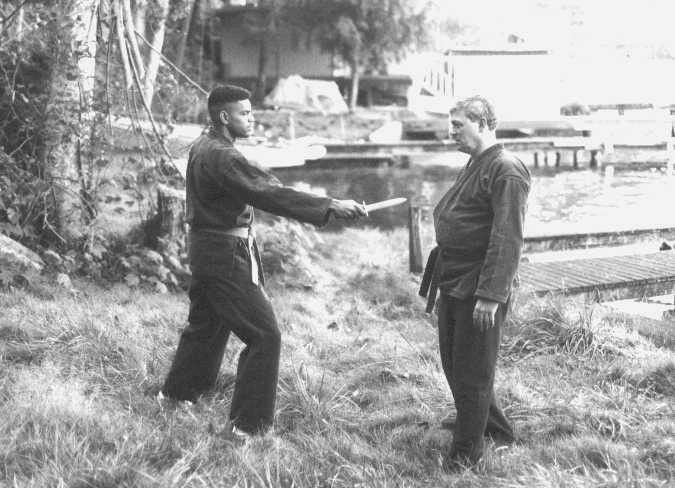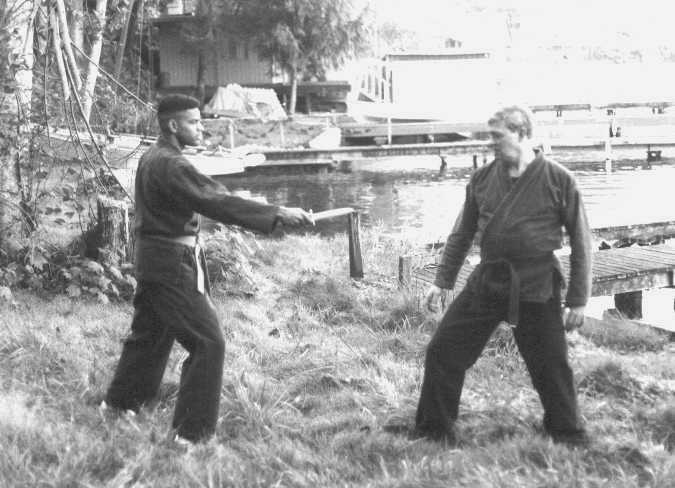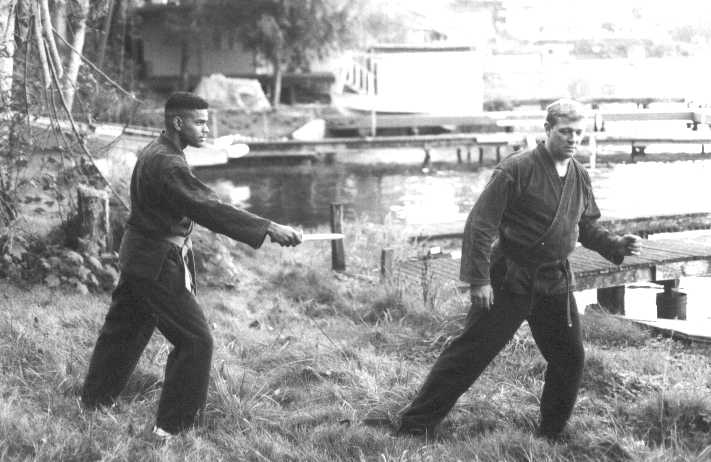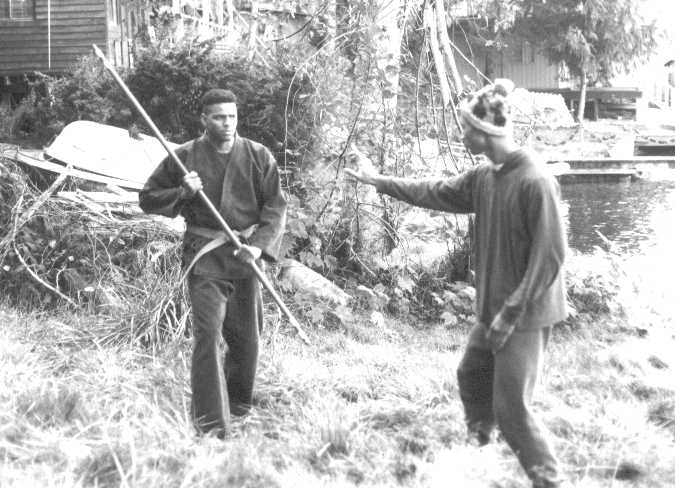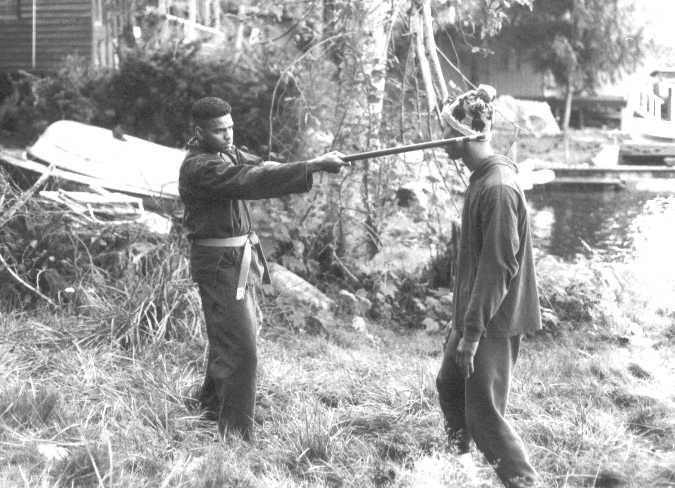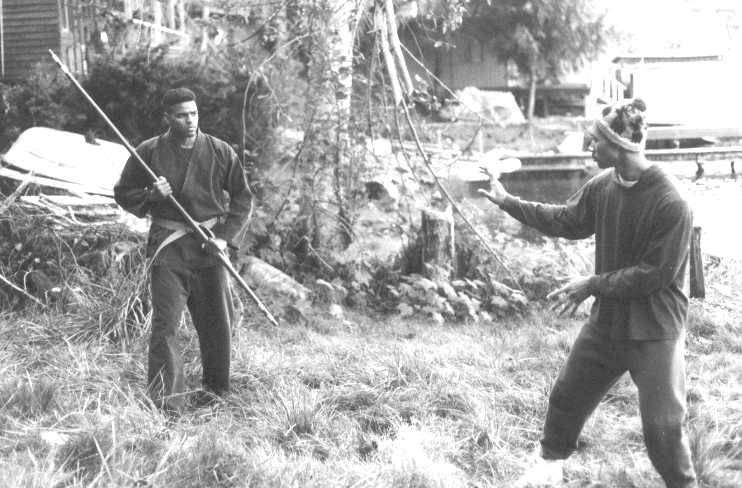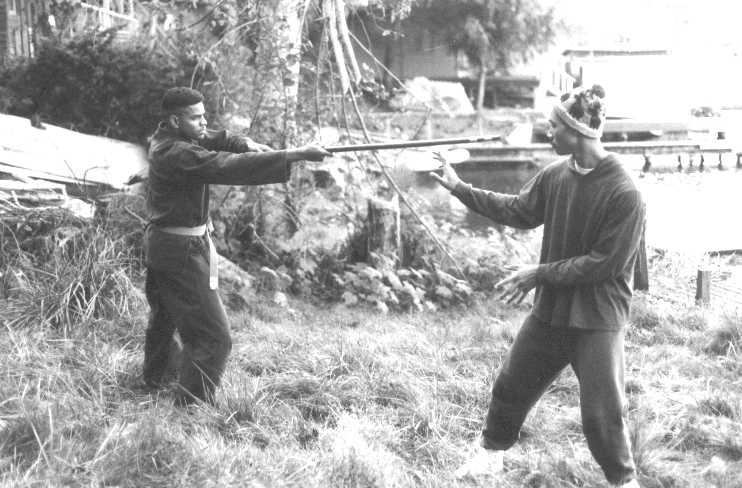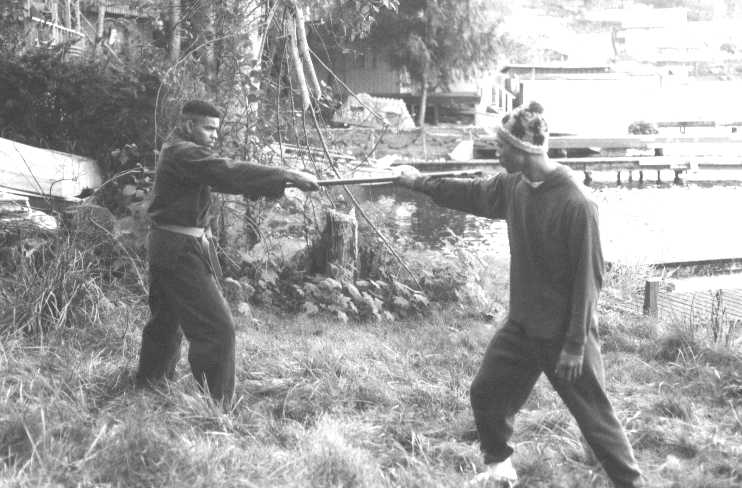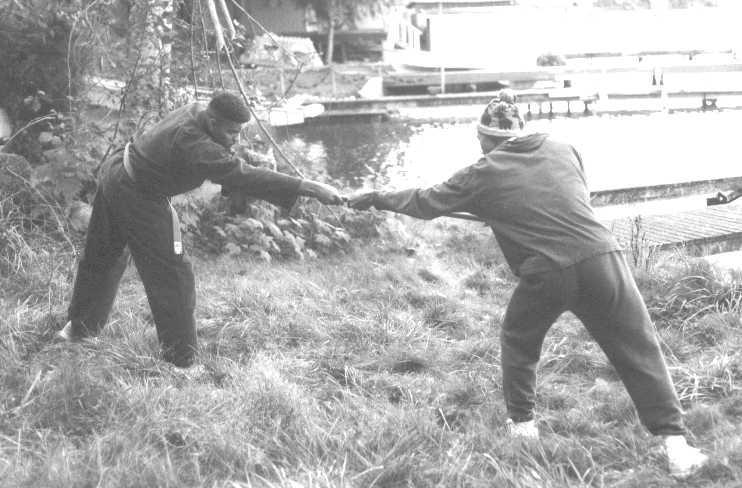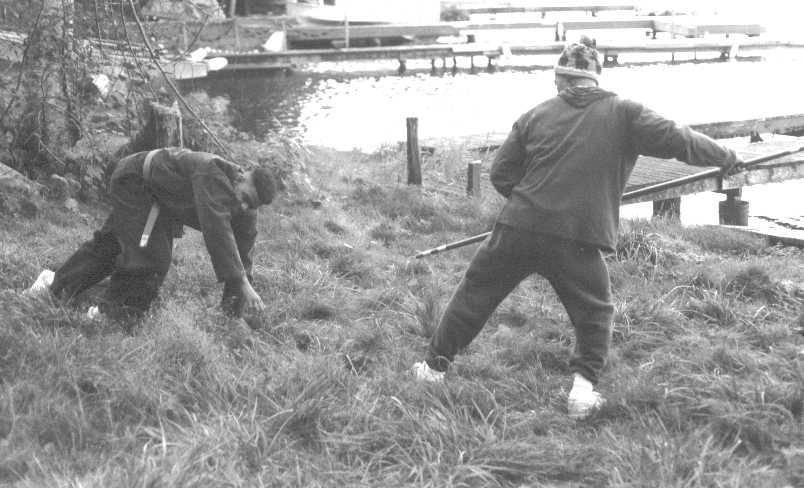
|
The Rules of Engagement Click below to support this vessel with a donation, or itís into the drink we go!!!
The principles were predicated on simplicity itself. This of course made them near impossible for most students to grasp. In demonstrating his skills, Lee would send attackers helplessly rebounding through space. The old man's feigned senility added to the illusion. He played the fool as opponents dropped to the ground. Certainly, Lee Pung was no magician. His mind, spirit and body simply soared unfettered. He moved so competently that time itself seemed to make way for the ebb and flow of his technique. Generations of masters
have come and gone since this legendary figure. The
principles underlying his movement remain as firm
footings for all modern styles originating on the
Northern Peninsula.
The traditions of Tai Chi, Hap Ki Do, and the several internal arts argue this as contrary to the fundamental reality of self defense. So much so that a student already in harmony was in jeopardy to even watch. This clashing bull approach to fighting did not qualify as a martial art by their reckoning. The masters of antiquity all understood methods existed to ensure ability to maneuver safely in a confrontation, while maximizing the ability to counter. There is a Buddhist saying that no matter how thick the forest or massive the trees, the stream flows unimpeded. If you are executing a fight of aggression, the very act of closing on your opponent relinquishes all available natural defenses. This brings us to look at the second aspect of conflict, self defense(Yin). The underlying premise of the self defense transaction is that there is no first move (except under rare preemptive circumstances). The internal arts teach that true self defense, professing no artificial end, and free from having to issue the first attack, is strategically superior. Lee Pung would have qualified that comment, adding it was only strategically superior for the person who knew. Understanding the Attack Newspapers are replete with stories of robberies at automated bank tellers, bus stops, or even traffic signals. Never assume the attacker is completely without advantage. At the least, he knows there is going to be an attack, while you do not. Furthermore, most attackers have "been there before." More than likely, you are not their first victim. Their history may include five, ten or even more successful attack encounters. The average mark is usually selected because he or she appears vulnerable to the assailant. The attacker's experienced eye will recognize your naivetť or lack of familiarity with street aggression.
So, even though Lee Pung taught defending has inherent advantages, these are offset by knowledge and experience which the average assailant has, that you do not. Self Defense Distance The masters fully
understood the impact of this dynamic. They taught once
the attacker initiates confrontation, we are "within his
dream." He has already selected the stage, dialogue,
storyline and perhaps even the ending. The Lee Pung
solution and the secret underlying his immensely
successful career as a martial artist was to always
operate within the script of his choosing. When the
attack unfolded, he superimposed his own intent over the
attacker's "dream script", in essence taking control.
Underlying this strategy was an innate understanding of proper self defense distance. This means you position yourself relative to the attacker so an attack cannot be launched before you have opportunity to avoid, block or neutralize. Definitions abound as to what constitutes proper self defense distance. Most masters agree it approximates the distance between two men, standing face to face with arms extended and fingertips touching.
It is to avoid such catastrophes, that master instructors established the following rules of engagement: 1.) Create conditions which tell you when the attack has begun; 2.) Once these conditions are established, maintain them in effect at all times. There are no exceptions; 3.) Signal to the potential assailant that once these markers are crossed, you will interpret his actions to be a life threatening attack; and 4.) If the conditions
are broached, you will react as though a life
threatening attack has occurred.
You are waiting at the bus stop after finishing classes one winter evening. Sitting in the waiting shelter, you see a figure step forward from the shadows. You register a 30-ish male figure closing quickly toward you. Recalling the rules for engagement, you immediately call out, "Stop -- What do you want?" Your voice is louder than normal, intentionally so, hoping to draw the attention of other passers-by to the situation. The stranger sheepishly slows his forward movement, smiles, then apologizes, saying, "I'm sorry. I didn't mean to startle you ..." Your past training makes you see he is continuing to close the gap. He chatters casually to distract your attention from that fact. You exclaim, "Stay where you are, damn it! You're threatening me, I won't tell you a third time." You have drawn the line. Only a committed attacker would cross at this point. Whether he is a committed attacker or simply reckless, your only option if he continues forward is to act as though an attack is in progress. He responds, "Look, I didn't mean to upset you. I lost my wallet, and I need bus money. If you can help me out, I'd appreciate it." The request for
assistance may be reasonable, but on today's ravaged
streets, you're taking a chance if you simply assume it
is. If, for reasons of your own, you chose to give him
the money, hold it out or set it down, then step away
without letting him close distance on you. If
youíre unable to help, the preferred response would be,
"I'm sorry, Iím unable to help." If he comes close, you
might add, " I have no further words for you, except if
you come any closer, I will consider it a threat on my
person, and act accordingly."
Keep in mind the attacker is working his line, and look at what has already taken place. Most predators are working within a two minute script. They know all the answers for approximately two minutes. In this instance, you have removed the attacker from his habitual script, and the transaction is becoming too complex for him to continue. Most likely, he will disengage, preferring to select a more pliable target. If he elects to continue, he will have forfeited his main advantage, surprise. You have set your line in the sand, and as his attack crosses over, you are free to do whatever you chose to reasonably protect yourself. Always bear in mind, that a jury, detached from the actual situation, might have a differing opinion in the aftermath. It is here that the theory of proper distancing yields its promised dividend. Protecting your distance ensures you consciously prevent the attacker from entering your vulnerable defense zone without first drawing your firm warning. If he attacks, you act. No hesitation, no self doubts. Having forced the attacker to launch from the extended position, your entire focus will be on impacting effectively to the available target areas with strikes that will do nothing less than save your life and dignity. |
[Home] [About Us
] [Archie] [Concepts] [Contact Us]
[Gun
Fu Manual] [Kata]
[Philosophy] [Sticks] [Stories] [Web
Store] [Terms of Use]
[Video]
Copyright 2000-2025, Mc Cabe and Associates, Tacoma, WA. All rights reserved. No part of this site can be used, published, copied or sold for any purpose, except as per Terms of Use .
